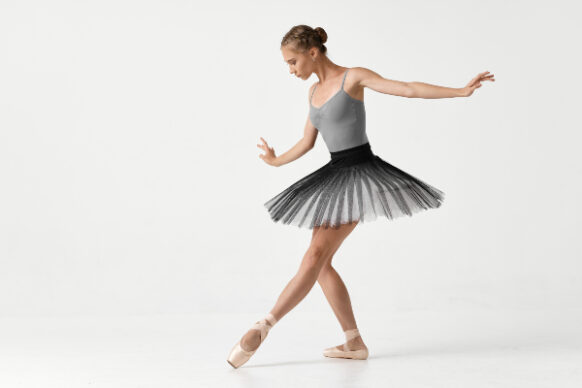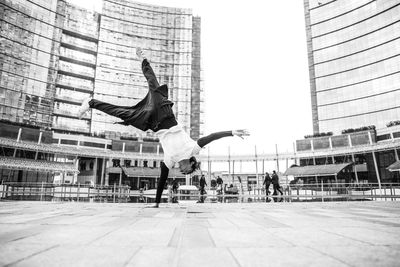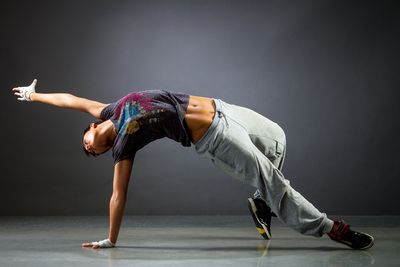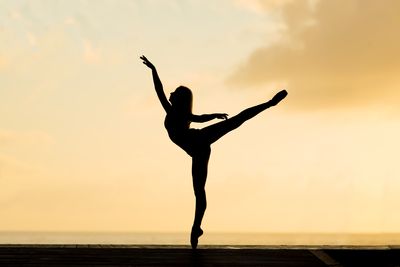By Kelli Wrolstad, PT, DPT, OCS
Every ballet dancer strives to have the perfect turnout position. This means rotating the legs from the hips so that the feet point outward at a perfect 180-degree angle. Some people are blessed with an ideal turnout position naturally, but others have to do a lot of work on their flexibility and strength to achieve this.
Anatomy
Turnout position should start from the hip joint. The hip is a ball-in-socket joint formed from the pelvis and the femur. Everybody’s anatomy is slightly different in how their hip joint is formed, and there are variations in the amount of bony coverage that a person might have. There are also numerous muscles and ligaments that attach around the hip that can impact a dancer’s mobility in this region. Therefore, if a dancer does not have a natural anatomic structure for ideal turnout, they must work on flexibility and strength of the muscles surrounding the hip to allow for greater range of motion.
Injuries Caused by Forced Turnout
Unfortunately, a common error seen in many dancers is forcing turnout. Often, dancers will use the floor to grip their feet in order to keep a turned-out position. This can cause problems all the way up the chain. At the foot and ankle, this can cause overpronation, leading to injuries like plantar fasciopathy and other tendinopathies. The twisting force can lead to tibial torsion in the lower leg, and at the knee can contribute to joint irritation or even meniscus pathology. At the hip, we can see labral tears or tendon problems like snapping hip. Forced turnout also results in anterior tipping of the pelvis, which can cause lower back pain. Thus, there are many common dance injuries that stem from forced turnout.
It Begins at the Hips
Instead of relying on creating turnout by gripping the floor, dancers should initiate their turned-out position by rotating at the hip first, then seeing where the rest of the leg and foot follow. If your turnout is not at the range you would like, stretching exercises to improve mobility, followed by strengthening exercises of the hip external rotators are a good place to start. Below are some examples of mobility and strengthening exercises that can help to improve an ideal turnout position:
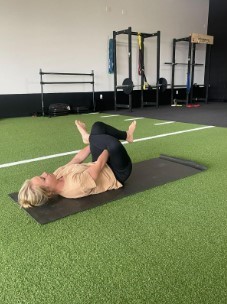
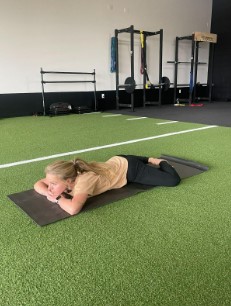
Clamshells
Fire Hydrants
Strengthening is a great way to help prevent injuries. For more great dancer’s exercises, check out our guide on Strengthing Exercises for the Dancer. If you have any questions or need help performing these exercises, get in touch with one of our trainers today.
